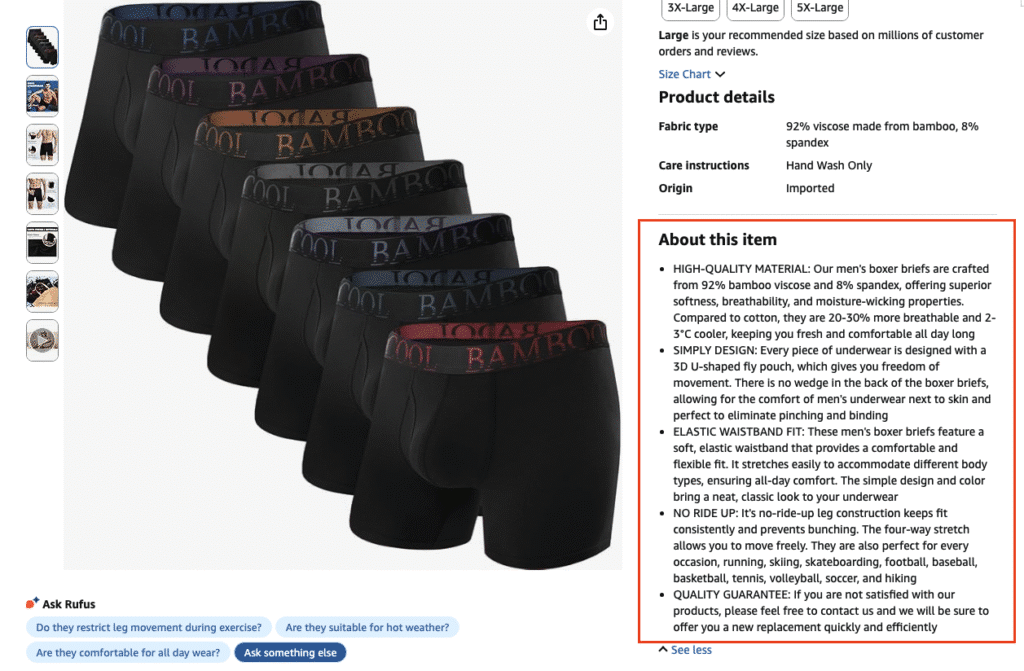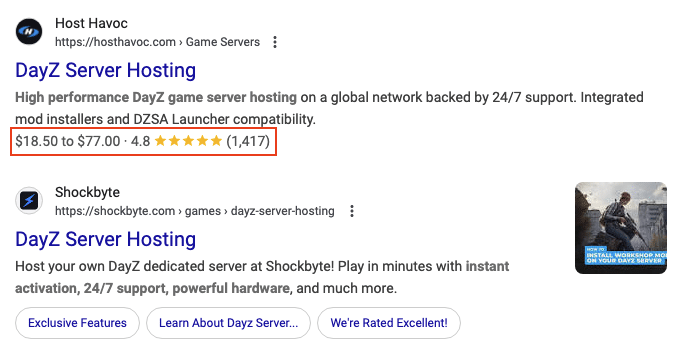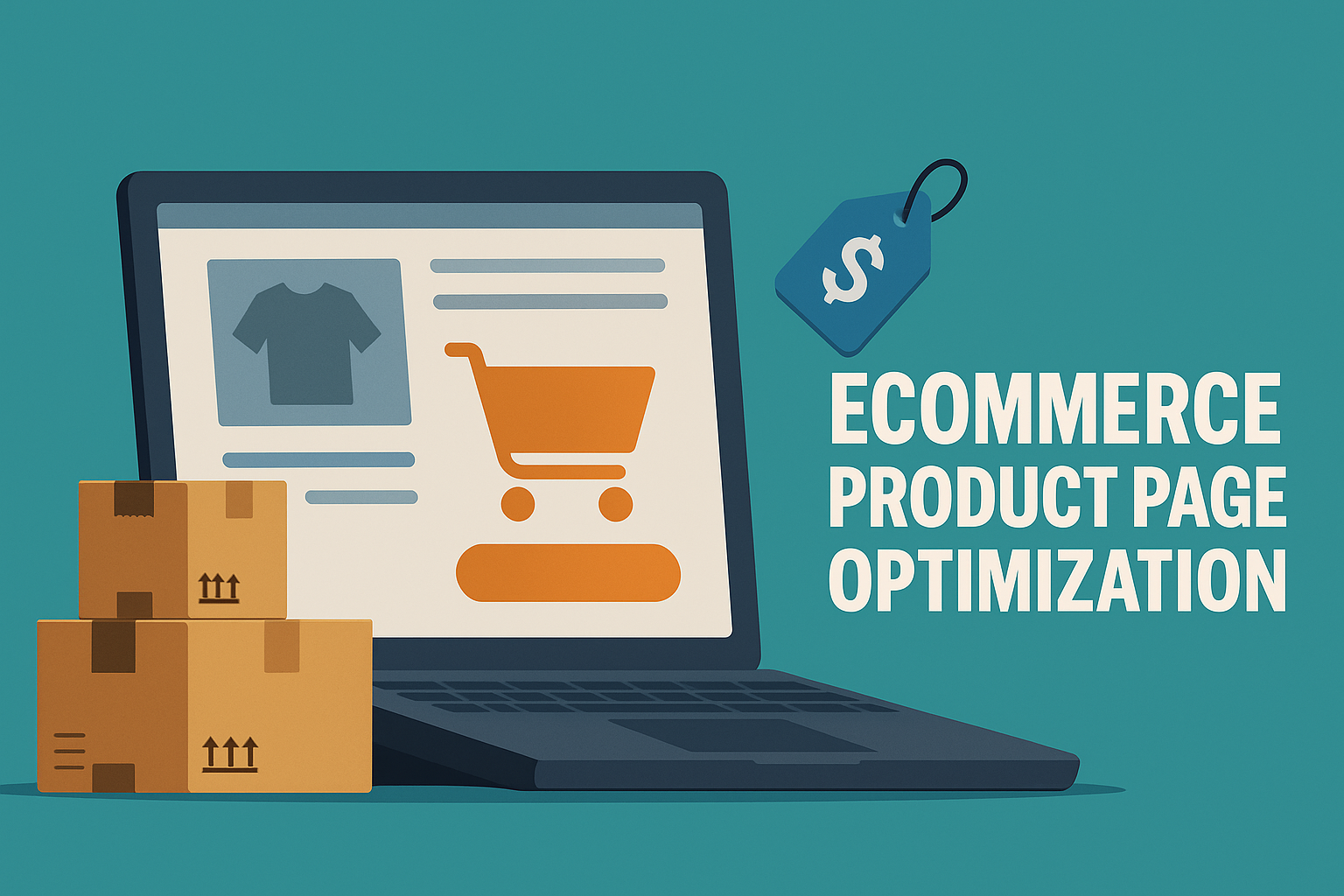An optimized product listing is no longer optional. It is essential. As ecommerce marketplaces like Amazon, Google Shopping, and Shopify become more competitive, brands need to do more than simply list products. They need to create listings that attract attention, answer customer questions, and convert interest into sales.
Well-optimized product listings serve two critical functions. First, they improve visibility by aligning with how shoppers search online. Second, they drive conversions by presenting clear, persuasive content that instills confidence and encourages purchase. With thoughtful optimization, listings become a powerful revenue driver across all major platforms.
This article will walk you through the key elements of effective product listing optimization, from keyword research and high-impact titles to image quality, structured data, and conversion-focused descriptions. Whether you’re fine-tuning listings on Amazon or launching new products on Shopify, these strategies will help you increase visibility, improve customer experience, and boost your bottom line.
1. Understand Your Audience & Keyword Strategy
Effective product listing optimization begins with understanding who your customers are and how they search. Without a clear grasp of your audience’s needs, preferences, and behavior, even well-written listings can fail to connect. A strong keyword strategy bridges the gap between your products and the way shoppers look for them online.
Define Your Target Audience
Start by identifying the demographics, buying habits, and pain points of your ideal customers. Ask questions like:
- Who is most likely to buy this product?
- What problems does it solve for them?
- What factors influence their purchasing decisions?
The more specific your answers, the better you can tailor your product titles, descriptions, and images to resonate with your audience.
Conduct Keyword Research
Once you know your audience, you need to understand the language they use when searching. Keyword research helps you identify the terms and phrases your target customers are entering into search engines and marketplace search bars.
Use tools like:
- Amazon Search Suggestions – See what autofills as you type in product terms
- Google Keyword Planner – Identify high-volume search terms
- Helium 10, Jungle Scout, or Semrush – Analyze competitive listings and keyword performance
- Customer Reviews and Questions – Extract common terms or phrases buyers use
Focus on finding a mix of high-volume keywords and long-tail keywords that show strong buying intent.
Map Keywords to Listing Elements
Once you’ve collected your keyword list, strategically place them throughout your listing:
- Title – Include the most important keywords while keeping it readable and compelling
- Bullet points or highlights – Use secondary keywords to emphasize benefits and features
- Product description – Incorporate natural language that reflects how customers talk about the product
- Backend search terms (if applicable) – Add relevant terms not already visible in your listing
Avoid keyword stuffing. Your goal is to enhance visibility without sacrificing clarity or customer experience.
2. Craft High-Impact Titles
Your product title is one of the most critical components of any ecommerce listing. It is the first thing shoppers see in search results and plays a major role in both search visibility and click-through rate. A strong title balances keyword optimization with clarity and relevance to capture attention and encourage action.
Prioritize Keywords Without Sacrificing Readability
Start with your most important keywords, usually the product type and top search terms, and work them into the beginning of the title. This ensures your listing is indexed properly and that shoppers immediately know what the product is.
At the same time, avoid keyword stuffing. Titles should still read naturally and appeal to real people. Clarity is just as important as SEO.
Example:
Instead of:
“Shirt Cotton Red Men’s T-Shirt Soft Tee Casual XL Fashion”
Try:
“Men’s Red Cotton T-Shirt – Soft, Casual Fit, XL”
The second version uses keywords effectively but is far easier to scan and understand.
Include Essential Product Details
Make sure your title communicates the core product information a shopper needs to make a decision. This might include:
- Product type
- Key material or feature
- Size or quantity
- Color or style
- Intended use or audience (e.g., “for kids,” “travel size”)
The more relevant details you can include without clutter, the more likely you are to get qualified clicks.
Follow Platform Guidelines
Each ecommerce platform has its own title requirements:
- Amazon: Stick to 200 characters or less, avoid promotional phrases, and follow their category-specific style guides.
- Google Shopping: Prioritize product type and brand early, and use the same language as your product feed.
- Shopify or other DTC platforms: Shorter titles often perform better, especially on mobile. Use clear language and let your product page do the rest.
Make sure you’re following platform-specific best practices to avoid listing suppression and improve performance.
Test and Refine Over Time
What works for one product or category may not work for another. Monitor your listings’ click-through and conversion rates, and test different title structures or variations. Even small changes in word order or emphasis can make a noticeable difference.
A well-structured, keyword-optimized title is your first opportunity to turn a search into a sale.
3. Write Clear, Persuasive Descriptions & Bullets
Your product description and bullet points are where you turn interest into intent. Once a shopper clicks on your listing, they want to know what the product does, why it’s better than alternatives, and whether it meets their specific needs. This section of your listing should combine clarity, structure, and persuasive language to build buyer confidence and increase conversions.
Focus on Benefits First, Then Features
Shoppers care about what a product can do for them. Start by highlighting key benefits. Things like how the product improves their life, solves a problem, or meets a specific need. Then back those claims up with supporting features and specifications.
Benefit-first example:
“Stay warm and comfortable during chilly mornings with our thermal-lined hoodie. Made from ultra-soft cotton and designed with a wind-blocking zipper for extra protection.”
Use Scannable Bullet Points
Bullet points help shoppers absorb key product details quickly. They’re especially important on platforms like Amazon, where bullets are displayed prominently near the top of the listing.
Use 4 to 6 concise bullets to cover:
- Core product features (materials, dimensions, functionality)
- Standout benefits (durability, comfort, speed, convenience)
- Use cases or lifestyle alignment (ideal for travel, daily use, workouts)
- Care or maintenance info if relevant
- What’s included in the box or package
For example:

Keep the structure consistent and avoid overloading with jargon or filler.
Write in a Clear, Natural Voice
Use straightforward language that reflects how your target audience talks. Avoid overly technical terms unless your product requires them. Match your tone to your brand, conversational for lifestyle products, professional for technical gear, or playful for kids’ items.
Clarity builds trust. Avoid long, complex sentences and break information into short, easy-to-read chunks.
Incorporate Secondary Keywords Naturally
While your main keywords should live in the title and bullets, the description is a great place to work in secondary or long-tail keywords that didn’t fit elsewhere. Use them naturally within the flow of the text to enhance relevance without sounding forced.
Overcome Objections
Address common buyer concerns proactively. If your product is a higher price point, justify the value. If it’s a newer brand, emphasize quality, materials, or customer support. Anticipating and answering hesitations in your copy improves purchase confidence.
Well-written descriptions and bullet points help shoppers move from consideration to conversion.
4. Use High‑Quality Images & Videos
Strong visuals are one of the most influential elements of any ecommerce product listing. They are often the first thing shoppers evaluate and can make or break their decision to click, explore, or purchase. Quality images and videos not only showcase your product but also build trust, highlight value, and reduce uncertainty, especially for first-time buyers.
Start with a Clean, Professional Main Image
Your main product image should be clear, well-lit, and set against a plain white background. This is the image most often shown in search results and ads, so it needs to be:
- Sharp and high-resolution (at least 1000 x 1000 pixels to enable zoom)
- True to color and accurately sized
- Free of distractions, clutter, or excessive branding
For platforms like Amazon and Google Shopping, this style is often a requirement.
Add Supporting Images to Tell the Full Story
Use your additional image slots to show your product in context and from different angles. A strong image gallery can communicate benefits, use cases, and scale far better than text alone.
Include images that show:
- The product from multiple angles
- The product in use (lifestyle or contextual shots)
- Size and dimensions (with visual references like hands or common objects)
- Close-up details of materials, features, or packaging
- What’s included in the box or kit
Each image should serve a specific purpose and move the customer closer to a confident purchase decision.
Incorporate Short Product Videos
Video is increasingly important in ecommerce. Even a short 15–30 second clip can provide more clarity and persuasion than multiple images.
Use video to:
- Show the product in real-world use
- Highlight unique features or functions
- Demonstrate installation, assembly, or performance
- Deliver a quick brand introduction or customer testimonial
Videos build credibility and keep shoppers engaged longer, especially on mobile.
Stay Aligned with Platform Requirements
Each ecommerce platform has specific guidelines for image format, sizing, and content. Be sure to follow these to avoid listing errors or suppressed visibility. Generally:
- Use JPEG or PNG formats
- Maintain consistent styling and branding across all images
- Avoid watermarks, borders, or text overlays (unless allowed)
Keep It Customer-Focused
When planning your images and videos, always ask: What would a shopper need to see to feel confident buying this product online? Fill in the gaps that they would usually get from holding the item in person.
Your visuals are the first impression and a major driver of conversion.
5. Add Structured Data & Rich Snippets
Structured data is the behind-the-scenes code that helps search engines better understand your product listings. When implemented correctly, it enables rich snippets, which are enhanced search results that display additional product information such as pricing, availability, reviews, and ratings. These enhancements can significantly increase your visibility, click-through rate, and overall sales.
What Is Structured Data?
Structured data is a standardized format (often JSON-LD) used to provide specific details about a product directly to search engines. It’s code added into your webpages. For ecommerce listings, the most common type is Product schema, which includes fields such as:
- Product name
- Description
- Price
- Availability
- SKU
- Brand
- Review and rating data
By clearly labeling this information, you give search engines more context, which improves how your product appears in search results.
You can learn more about product schema here and use our product schema generator tool to help generate code for yours own product pages.
Benefits of Using Structured Data
Increased Visibility in Search
Using structured data increases the chance of rich snippets showing up in your search results in search engines. Rich snippets make your listings stand out by displaying more information directly in search results. This can lead to:
- Higher click-through rates
- Better user engagement
- More qualified traffic
For example, a product listing that shows a star rating, price, and “In Stock” badge is more likely to attract clicks than one with just a title and meta description.
Here is an example of rich snippets showing pricing and review data:

Improved SEO Performance
While structured data is not a direct ranking factor, it helps search engines index your content more accurately, which can contribute to better visibility over time. It also increases your chances of being featured in Google Shopping, voice search results, and other enriched formats.
Enhanced Product Listings on Your Site
Many ecommerce platforms like Shopify, BigCommerce, and WooCommerce allow you to automate structured data implementation. If you’re using a custom-built website, structured data can be added manually or through plugins to ensure product details are machine-readable.
How to Implement Structured Data
- Use Google’s Structured Data Markup Helper or schema.org documentation to understand required fields
- Add Product schema directly to your product pages using JSON-LD format
- Validate your markup with Google’s Rich Results Test to ensure it is error-free
- Monitor performance using Google Search Console to track how rich results appear and perform over time
If you’re using platforms like Shopify or WooCommerce, many themes and apps already include basic structured data. For more advanced customization, developers can enhance schema manually to ensure it includes all relevant fields.
Structured data helps your listings do more than show up. It helps them stand out.
6. Optimize for Mobile & Voice Search
As more shoppers browse and buy using smartphones and smart speakers, optimizing your product listings for mobile and voice search is no longer optional. These platforms require streamlined, user-friendly content that delivers information quickly and clearly. By tailoring your listings for how people search and shop on mobile devices and voice assistants, you can expand your reach and improve conversion rates.
Make Listings Mobile-Friendly
Mobile shoppers expect speed, simplicity, and easy navigation. A poorly formatted or slow-loading product page can quickly drive them away. Here’s how to ensure your listings are mobile-optimized:
- Use concise, scannable content: Break up text into short paragraphs and bullet points for easy reading
- Prioritize above-the-fold content: Place key product details, pricing, and CTAs near the top of the page
- Optimize images for fast loading: Use compressed, high-quality images that don’t slow down performance
- Choose a responsive design: Ensure your ecommerce platform or theme adapts seamlessly to different screen sizes
A mobile-friendly listing improves user experience and contributes to better search rankings on platforms like Google and Amazon.
Write for Voice Search Queries
Voice search is growing rapidly as more shoppers use assistants like Alexa, Siri, and Google Assistant to research and shop. Voice queries tend to be more conversational and question-based, so your listings should reflect that language.
- Use natural language: Include phrases that sound like how someone would speak, not just type
- Answer common questions: Add brief Q&A-style content in product descriptions or FAQs
- Incorporate long-tail keywords: Voice search often includes more detailed queries, so phrases like “best running shoes for flat feet” are more relevant than single-word terms
- Include structured data: Schema markup helps voice assistants identify and extract relevant information from your listings
Optimizing for voice search makes your listings more accessible and future-ready, especially as voice commerce continues to expand.
Test Across Devices
Before publishing a listing, view it on multiple devices to ensure consistent formatting and usability. Make sure:
- Text isn’t cut off or hidden
- Buttons are easy to tap
- Images and videos load correctly
- Important product info is easily accessible
User experience matters as much as search visibility, especially for mobile-first shoppers.
By optimizing your product listings for mobile and voice search, you ensure they perform well across all the platforms where today’s consumers shop.
7. Refine Attributes, Categories, & Filters
Product visibility on ecommerce platforms depends heavily on how well you organize your listings. Accurate attributes, relevant categories, and clear filter options ensure your products appear in the right searches and can be easily discovered by shoppers. These details may seem minor, but they play a major role in improving search relevance, navigation, and conversion rates.
Assign Accurate Product Attributes
Attributes are the specific details that describe your product, size, color, material, brand, and more. These fields often power a platform’s internal search engine and on-site filters. If attributes are incomplete or inaccurate, your product may not appear when shoppers use filters or search by specification.
Best practices for attributes:
- Complete all relevant attribute fields during product setup
- Use standardized, platform-accepted values (e.g., “Blue” instead of “Blu”)
- Avoid leaving optional fields blank if they can help with search filtering
- Match attribute data to what your target customer is likely to search for
On marketplaces like Amazon and Google Shopping, well-defined attributes can improve your listing’s eligibility for enhanced placements like product carousels and shopping ads.
Place Products in the Correct Categories
Choosing the right category helps shoppers find your product faster and signals relevance to the platform’s algorithm. Misclassified products may be suppressed in search results or missed entirely by users browsing by category.
To improve accuracy:
- Follow the platform’s category taxonomy or use a category suggestion tool
- Choose the most specific applicable category (e.g., “Running Shoes” instead of just “Shoes”)
- Avoid keyword stuffing in category fields; relevance matters more than volume
Getting the category right from the beginning also reduces the chance of having your listing flagged or hidden due to policy violations.
Optimize Filter Tags for Better Browsing
Many ecommerce platforms allow users to refine product results using filters such as price range, brand, style, or size. If your product doesn’t include the correct filter tags, it may be excluded from narrowed-down search results, even if it matches what the shopper is looking for.
To optimize filters:
- Use all relevant filter options available in your product setup
- Keep naming consistent across your catalog (e.g., avoid mixing “Large” and “L”)
- Monitor how shoppers interact with filters and update tags based on behavior or feedback
Filter-friendly listings enhance user experience, reduce friction in the buyer journey, and help move shoppers closer to purchase.
By refining your product attributes, categories, and filters, you make your listings easier to find and more appealing to shoppers.
8. Showcase Social Proof & Urgency Tactics
Social proof and urgency are powerful psychological triggers that influence purchasing decisions. When shoppers see that others have bought and loved a product, or feel they might miss out if they don’t act quickly, they are more likely to complete a purchase. Integrating these elements into your product listings can boost trust, reduce hesitation, and increase conversions.
Leverage Social Proof
Social proof reassures potential buyers that your product is legitimate, popular, and worth purchasing. Here are a few effective ways to incorporate it into your listings:
- Customer reviews and ratings: Positive reviews build credibility. Display review count and average star ratings prominently in your listing.
- User-generated content: Feature customer-submitted photos or testimonials to show real people using your product.
- Trusted badges and endorsements: Highlight awards, media mentions, or endorsements from influencers or well-known brands.
- Sales volume indicators: If allowed by the platform, mention how many units have been sold or how popular the item is (e.g., “Over 5,000 sold”).
Shoppers often look for validation before purchasing, and these signals provide the confidence they need to move forward.
Use Urgency and Scarcity to Drive Action
Creating a sense of urgency helps prompt faster decisions and prevents customers from delaying or abandoning a purchase. This can be achieved through:
- Limited-time offers: Display time-sensitive promotions such as “20% off for the next 12 hours.”
- Low stock alerts: Phrases like “Only 3 left in stock” or “Selling fast” can motivate quick action.
- Countdown timers: On your own site, use timers to show when a deal expires or when shipping cutoff times are approaching.
- Seasonal messaging: Tie urgency to holidays, back-to-school shopping, or other relevant events.
When using urgency tactics, always be truthful and avoid misleading claims. Overuse or false scarcity can damage trust.
Where to Place These Elements
- Above the fold: Include star ratings, trust badges, and urgency banners near the top of the listing
- Within product descriptions: Reinforce popular use cases, customer satisfaction, and promotional timeframes
- Near the add-to-cart button: Use phrases like “Selling Fast” or “Only a Few Left” to create momentum
Incorporating social proof and urgency helps move customers from browsing to buying.
9. Monitor Performance & Iterate
Optimizing your product listings isn’t a one-time task. It is an ongoing process. To maintain visibility, improve conversions, and stay competitive, you need to continuously evaluate how your listings are performing and make informed adjustments based on real data.
Track Key Performance Metrics
Start by identifying the most important metrics that reflect how well your listings are doing. These may include:
- Click-through rate (CTR) – Indicates how often people click on your listing after seeing it in search results.
- Conversion rate (CVR) – Measures how many visitors complete a purchase after viewing your listing.
- Bounce rate and time on page – Show how engaging your product page is once a shopper lands on it.
- Search rank position – Tracks how your listing ranks for key search terms over time.
- Customer reviews and feedback – Provide insights into what customers love or dislike about your product and presentation.
Most ecommerce platforms offer reporting tools or integrations that make it easy to track these metrics. Use Google Analytics, Amazon Seller Central, or third-party analytics tools depending on where you sell.
Use A/B Testing to Improve Performance
Split testing helps you experiment with different versions of your listing to see what works best. Test one variable at a time, such as:
- Product titles
- Main images
- Bullet points
- Descriptions or feature order
- Price points or promotional language
Monitor the results over a set period and keep the version that delivers stronger performance. Small adjustments can lead to meaningful improvements in traffic and sales.
Respond to Trends and Seasonality
Consumer behavior shifts with seasons, market trends, and new competitors. Keep an eye on:
- Search term trends – Adjust keywords to match evolving language or seasonal phrases.
- Inventory and fulfillment changes – Update shipping information, lead times, or return policies as needed.
- Customer feedback – Make adjustments if reviews point to confusion, sizing issues, or unclear product details.
Being responsive to changes in buyer behavior helps keep your listings relevant and effective.
Maintain Consistency Across Channels
If you sell on multiple platforms, ensure updates made to one listing are reflected elsewhere. Consistency in messaging, pricing, and branding builds trust and makes cross-channel shopping seamless for your customers.
Continuous optimization ensures your listings don’t just stay live. They stay competitive.
10. Use AI & Automation Smartly
Artificial intelligence and automation tools have become valuable assets in product listing optimization. When used correctly, they can save time, reduce manual errors, and improve the consistency and performance of your listings. The key is to use them strategically, complementing human insight, not replacing it.
Automate Repetitive Tasks
Many ecommerce platforms offer built-in tools or third-party integrations that automate repetitive listing tasks, including:
- Bulk uploading and editing product data
- Populating standardized attributes across product variants
- Auto-generating meta descriptions, tags, and categories
- Scheduling price updates and promotions
These automations streamline catalog management, reduce manual workload, and allow your team to focus on higher-impact activities like copywriting and branding.
Leverage AI for Listing Generation and Optimization
AI writing tools can assist with creating product titles, bullet points, and descriptions, especially for large catalogs where writing each listing from scratch isn’t practical. Tools like ChatGPT and other ecommerce-focused platforms can help you:
- Generate keyword-rich titles and descriptions based on product attributes
- Maintain consistent tone and format across listings
- Identify missing content or incomplete fields
- Translate listings for international markets
Also check out some of the free AI tools we offer at ShipBuddies:
While AI speeds up content creation, it’s important to review and fine-tune output for accuracy, tone, and clarity. Always proof your listings to ensure they reflect your brand and speak effectively to your target audience.
Use AI for Keyword and Competitor Analysis
AI-powered SEO tools can surface high-performing keywords, track ranking changes, and analyze competitor listings to identify opportunities. These tools can help you:
- Discover emerging search terms
- Monitor keyword performance across platforms
- Benchmark your listings against top competitors
- Adjust content to stay competitive in real time
Smart keyword targeting improves both visibility and relevance, especially when monitored and updated regularly.
Maintain a Human Touch
AI and automation tools are best used as support, not a replacement for your team’s expertise. Human insight is essential for:
- Understanding nuanced customer needs
- Crafting emotionally resonant copy
- Prioritizing product storytelling and brand voice
- Making strategic content decisions that algorithms can’t
The most effective listing strategies combine the speed and scale of automation with the empathy and context that only people provide.
Using AI and automation smartly helps you scale your ecommerce listings without sacrificing quality.
Your Blueprint for Better Listings
Optimizing your product listings is not just about visibility, it’s about building trust, improving conversions, and scaling your ecommerce business effectively. Every element, from keyword strategy and high-impact titles to mobile optimization and structured data, plays a role in how shoppers discover, evaluate, and purchase your products.
By taking a comprehensive approach that includes audience targeting, clear content, strong visuals, technical SEO, and smart use of tools like AI, you create listings that perform consistently across platforms. This strategy not only drives more traffic but also turns that traffic into meaningful sales.
Listing optimization is an ongoing process. Trends shift, algorithms change, and customer behavior evolves. The most successful sellers are those who continuously refine their listings based on performance data, customer feedback, and strategic insights.
Whether you’re selling on Amazon, Google Shopping, Shopify, or multiple channels, these principles will help you stand out in a crowded marketplace and build a strong foundation for long-term growth.
Start with one improvement. Track the results. Then keep going. Small optimizations lead to big gains.







